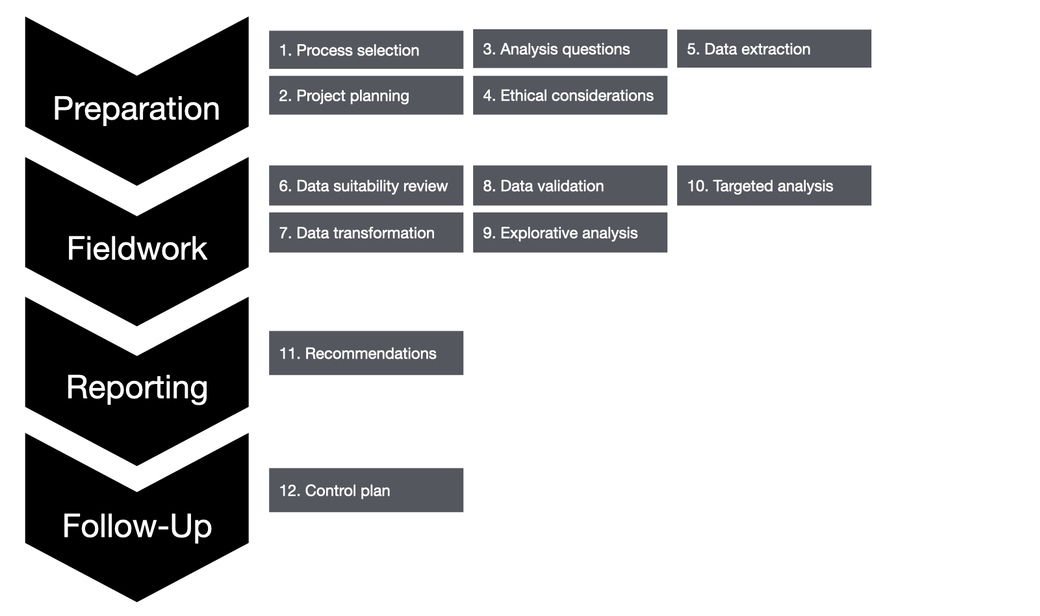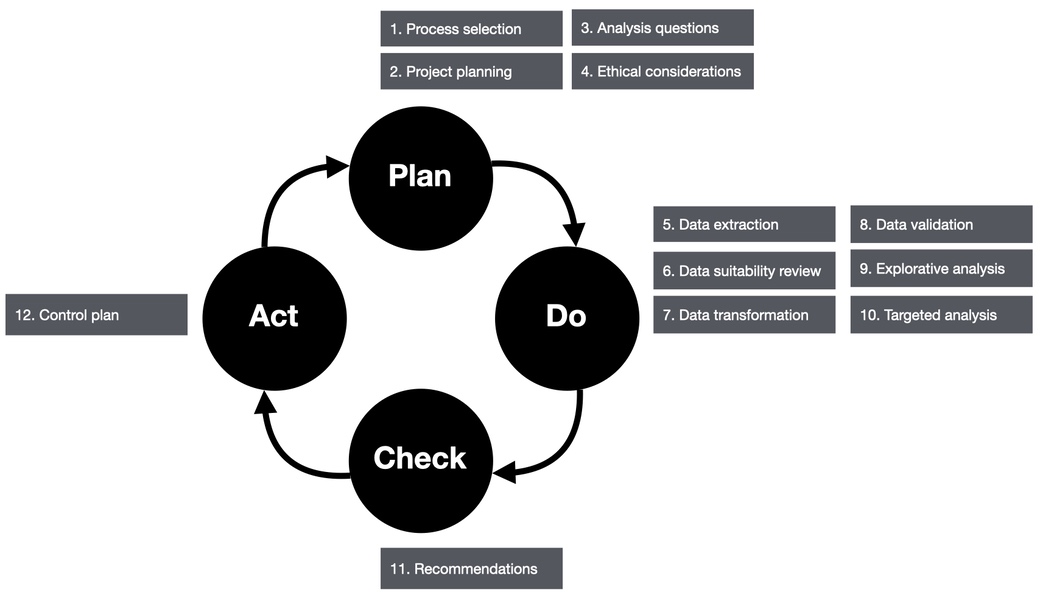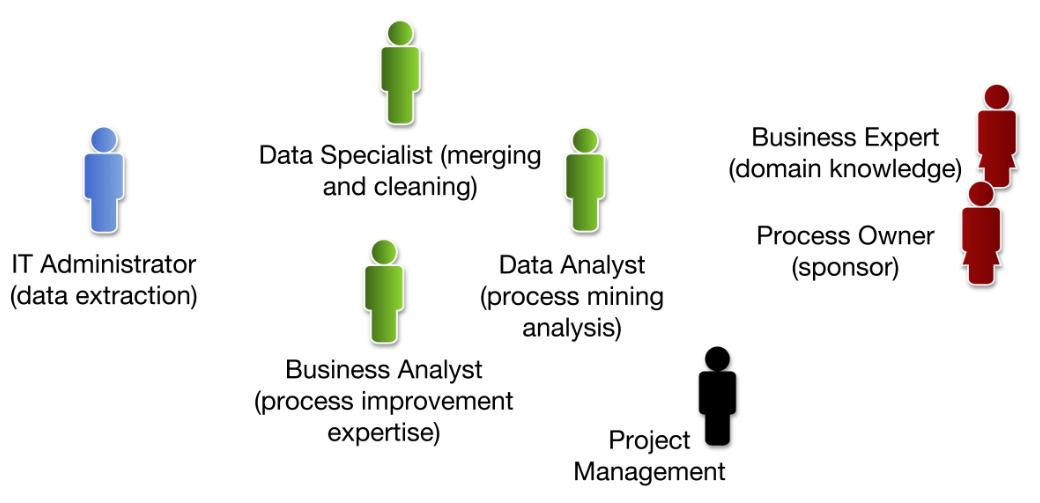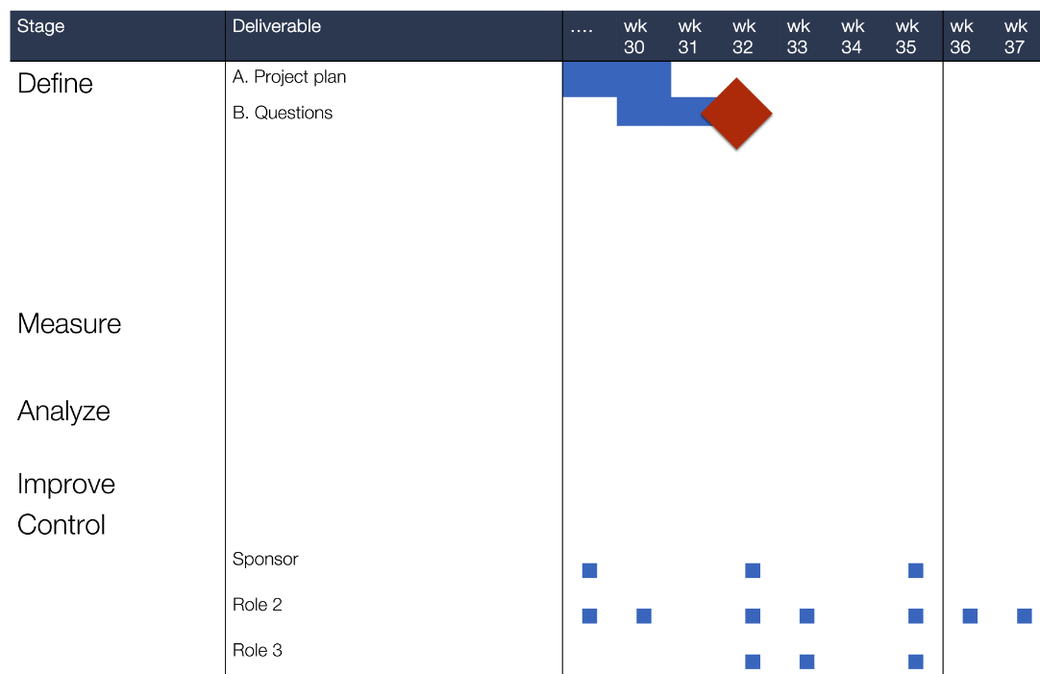This is the 2nd article in our project guide series. You can find an overview of all the articles in the series here.
Today, we bring you the second step in any process mining project: Creating your project plan (see below).
It all starts with inspiring others
One of the challenges is that process mining and its potential are often unknown. To find a suitable project, you usually must make some noise to get the right people on board.
Showing the potential and discussing the opportunities and challenges of applying process mining is, therefore, an excellent first step. You can show an introduction, a live demo (see video), a case study, or a video recording (a shorter, 15-minute version is here). What would be the biggest potential for process mining within your organization? For inspiration, you can also look at the typical use cases for process mining here.
Once you have selected your process and have an idea for a project, you can create your project plan. For experienced project managers this is easy. However, if running a project is new for you, you might be tempted to skip this step and dive right into the analysis. Don’t do this.
If you don’t know how to make a good project plan and it seems like a daunting task, read the following article. Fortunately, rather than a big, scary document, the project plan can be quite practical. It is there for you and it helps you to communicate the objectives, the investments and the risks to your stakeholders. To get started, you can answer the following five questions.
[As a companion to this step, you can watch the video recording of our Process Mining Café about Project Planning here.]
1. The Objective: Understand the problem and why do we need to do something about this now?
Create a one-page overview for your project by writing the following three paragraphs.
Describe the situation in a maximum of 100 - 150 words.
This is a statement of the current state of affairs. It should be fact-based (e.g., “Since its founding 15 years ago, the company has grown from a startup with no revenue and one employee to a robust enterprise with $15 million in revenue and 60 employees”). Because it is fact-based, this situation description should be something with which no one can reasonably disagree. We often use this section to highlight positives. If possible, give the person to whom you are presenting credit for their accomplishments.
Describe the problem in a maximum of 100 - 150 words.
This is a statement of the problem – the issue you are addressing (e.g., “Over the past three years, revenue growth has stalled”). It lays out why the company should act. Without this problem, the company wouldn’t need to do anything; There would be no reason for a change. People who are resisting the change you are suggesting may try to take issue with the problem. After all, if it isn’t valid, there is no need to change. Therefore, you, as the presenter, should base this section on objective facts that are irrefutable (“Sales three years ago were $15.1 million, while sales last year were $14.9 million”). People may not like hearing this, but they can’t argue that it isn’t true.
Describe the goal in a maximum of 100 – 150 words.
This is your recommendation; it resolves the problem. The goal brings focus to your process mining analysis. For example, are you improving customer experience, reducing cost, or mitigating risks? What would be the primary questions that you need to answer to understand the problem fully? If you can’t boil your recommendation down to a single goal, you should have more than one project.
2. The Approach: How does process mining fit the methodology and approaches we adopted?
Process mining is agnostic to which methodology you use, but it needs a surrounding approach to be effective. Most organizations already use a methodology, for example, for their improvement projects or audits. We advise applying process mining in combination with the methodology that your organization has adopted.
Find out which approach is used and align your process mining project plan with this existing approach. Describe why process mining is beneficial in this context.
Lean Six Sigma: DMAIC
For example, many companies use the Define Measure Analyze Improve Control (DMAIC) approach of Lean Six Sigma. You can see how the twelve process mining steps align with DMAIC in the image above. To see an example of the benefits of using process mining with Lean Six Sigma, read our series on combining Lean Six Sigma and Process Mining and watch this Process Mining Café about Lean Six Sigma and Process Mining.
Auditing
Another example is the use of process mining in an audit project. Each audit department already has an approach that structures the audit into several phases. The following picture shows how the twelve steps of the process mining project fit into the audit process described by Wilco Brouwers and Dave Jansen from CZ. To see a detailed example of how process mining was used in a concrete audit, read this case study about Auditing with Process Mining by Jasmine Handler and Andreas Preslmayr from the City of Vienna and watch this Process Mining Café about how process mining changes the traditional audit approach.
Plan Do Check Act (PDCA)
You can map any approach on the twelve steps of your process mining project. For example, the last image above shows how they align with the Plan Do Check Act (PDCA) improvement cycle.
3. Sponsorship and Project Team: Who needs to be involved?
No one knows everything. A variety of skills and roles are required for your process mining project team. Sometimes, a single person can combine multiple roles at once. In other situations, you need to involve different people for each role.
Determine who you need on your team and who provides vital input. For example, make sure you have someone on board who helps you to get and prepare the data. Furthermore, in addition to the sponsor, you will need access to domain experts who help you validate the data and can answer questions about the process during the analysis.
4. Key Risks: What are the key risks, and how should we mitigate them?
Unexpected things will happen during your project. Some of them you can’t plan for upfront, but for the things that are likely to happen, you can already discuss what to do.
For example, what do you do if you have difficulties accessing the data or have significant data quality problems? In our Process Mining Café about project planning, we recommend building in a deliberate breaking point early in your project, where you determine whether the data is suitable to continue.
Discussing these key risks with your sponsor and agreeing on how to handle these situations will help you find the proper support throughout your project.
5. Deliverables: What will be delivered when?
Set a realistic plan to manage expectations. Most process mining projects will take from 4 weeks up to 6 months. Projects that take longer are either scoped down or broken up into multiple stages.
Think about the deliverables that you will produce in each of the process mining project phases. Note that there can be multiple deliverables per step. For example, rather than going into the complete data extraction right away, it is a good idea to request a small sample of data first. This will help ensure that process mining fits the purpose without wasting too much time on other things.
Think through your whole project, but keep it simple. Your main goal with the project plan is to help you manage the risks and communication points in the team.
Planning is often seen as a burden, but it doesn’t have to be. If you create your plan by answering the five questions above, you are good to go.
Have you written your project plan? Great! Then, you can move to the next step: Defining your analysis questions.
To read the following articles in this project guide series, keep an eye on this blog or receive email notifications for new blog articles by signing up here.







